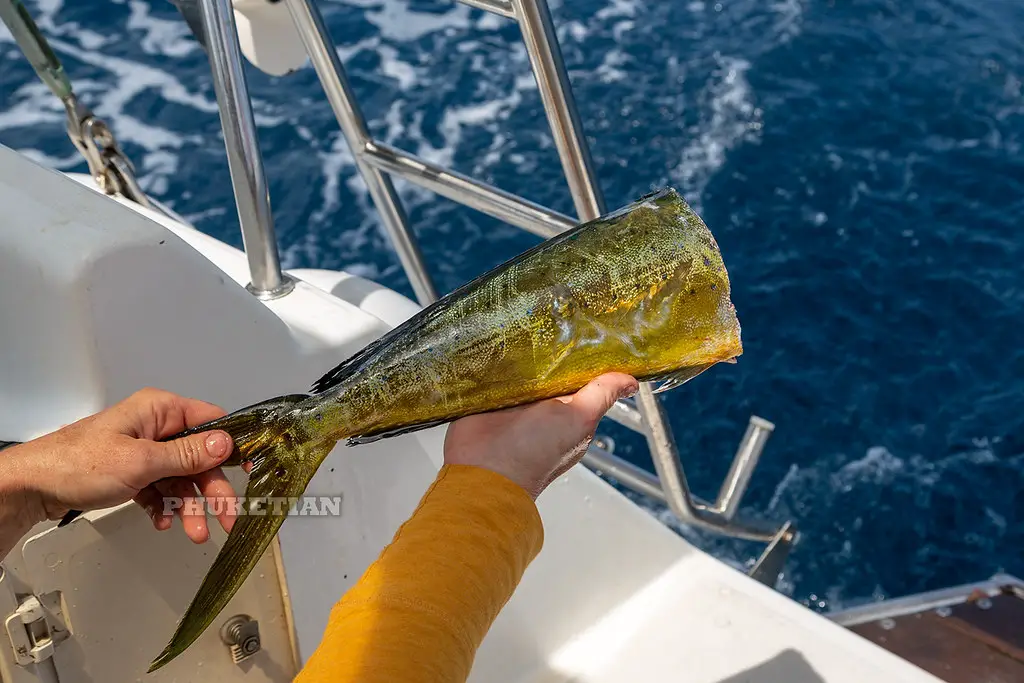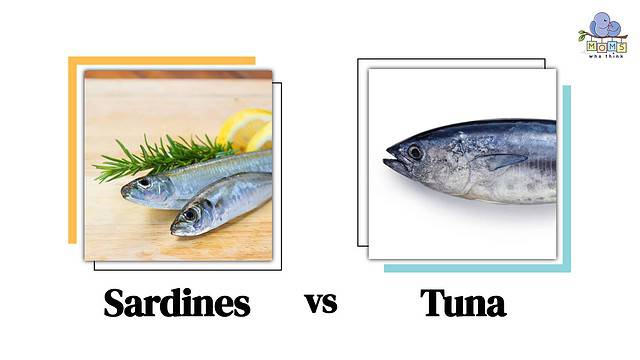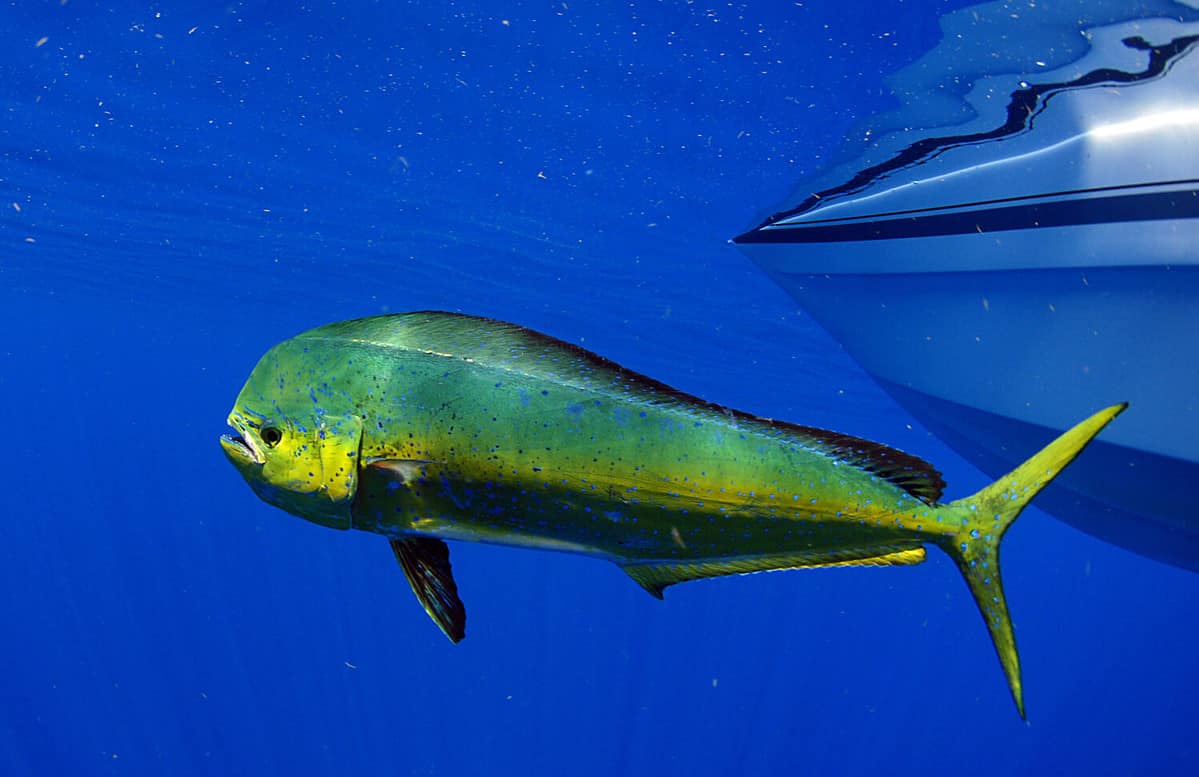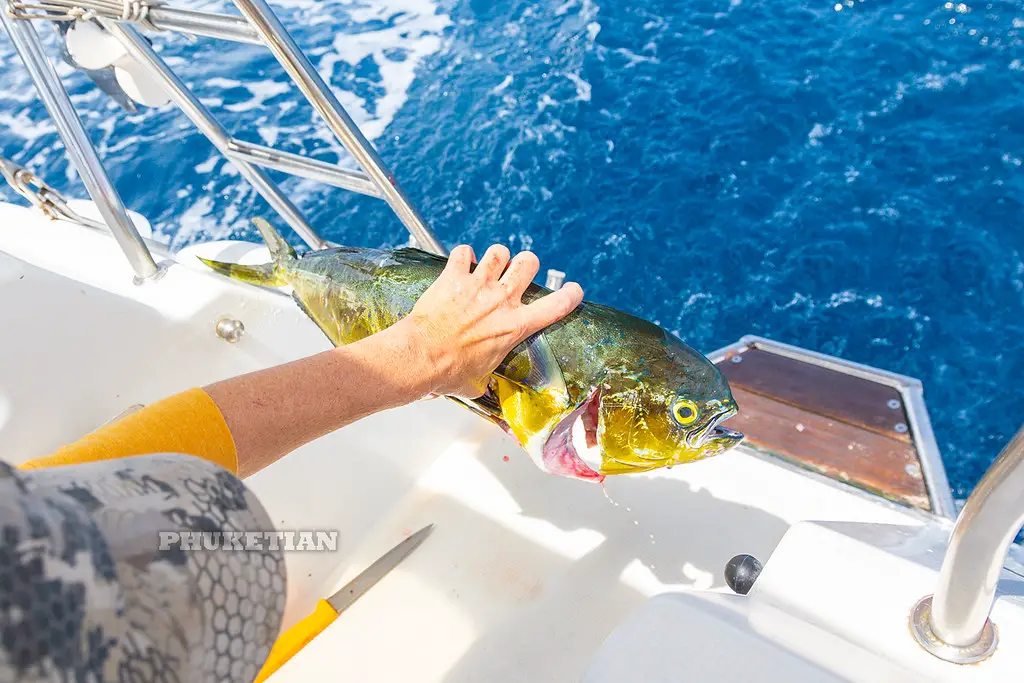Mahi Mahi Overview

Mahi Mahi, also known as dolphinfish, is a prevalent warm-water fish found in tropical and subtropical oceans. It is recognized for its vibrant colors, with a bright blue and green dorsal side, and a silver-white belly. Mahi Mahi has a mild sweet flavor that pairs well with a variety of seasonings and sauces. Its flesh is firm yet tender, making it suitable for grilling, baking, or pan-searing. This versatile fish is treasured by chefs and seafood lovers for its delicate taste and versatility in creating flavorful dishes. Incorporating Mahi Mahi into your meals introduces a delightful touch to any seafood lover’s palate.
Mahi Mahi Characteristics And Flavor
Mahi Mahi, also known as dolphinfish, is a tropical fish with vibrant colors and a distinctive taste. Its appearance is characterized by a bright blue and green dorsal side, with a silver-white belly. Mahi Mahi has a mild and slightly sweet flavor that is not overpowering. It is often compared to the taste of swordfish or tuna, but with a milder profile. The texture of Mahi Mahi is firm yet tender, making it versatile for cooking methods such as grilling, baking, or pan-searing. Its delicate taste and firm texture make it a favorite among seafood enthusiasts.
Mahi Mahi Textures And Culinary Uses
Mahi Mahi has a firm and lean flesh, giving it a meaty texture that holds up well in various cooking methods. Its texture remains moist and tender even when cooked, making it a versatile fish for different culinary applications. Mahi Mahi can be grilled, broiled, or pan-seared to bring out its natural flavors and develop a slight char. Its firm texture also makes it suitable for baking or poaching. Additionally, Mahi Mahi can be used in tacos, salads, sandwiches, or as a filling for fish cakes. Its versatility in both texture and flavor allows for creative and delicious dishes.
Salmon Overview

Salmon is a popular cold-water fish known for its distinctive flavor and nutritional benefits. It is widely available in both the Pacific and Atlantic oceans, making it a versatile seafood option for many regions. Salmon has a buttery texture and a rich taste that can range from mild to savory. This fish is not only delicious but also packed with omega-3 fatty acids, protein, and essential vitamins and minerals. With its versatility and health benefits, salmon is a favorite choice for various culinary applications, from grilling and baking to smoking and poaching.
Salmon Characteristics And Flavor
Salmon is a cold-water fish known for its distinct characteristics and flavor. It has a rich and savory taste that can range from mild to robust. The flesh of salmon is firm and buttery, with a delicate texture that easily flakes apart when cooked. One of the defining features of salmon is its vibrant orange or red color, which adds visual appeal to any dish. Whether grilled, baked, or smoked, salmon retains its flavor and remains moist, making it a versatile choice for various culinary applications. Its unique flavor profile sets it apart from other fish options and makes it a popular choice among seafood enthusiasts.
Salmon Textures And Culinary Uses
Salmon has a unique texture that is firm and buttery, with delicate flakes that easily separate when cooked. This makes it a versatile fish to work with in the kitchen. The firm texture of salmon allows it to hold up well to grilling, baking, and broiling, making it a popular choice for those methods of cooking. Additionally, the buttery texture of salmon lends itself perfectly to being smoked, resulting in a rich and flavorful smoked salmon. Its versatility makes salmon a favorite ingredient in a variety of dishes, including salads, pasta, tacos, and sushi rolls.
Mahi Mahi Nutritional Value

Mahi Mahi is a nutritious fish that provides a range of important nutrients. It is a lean source of protein, making it a great choice for those looking to increase their protein intake. Mahi Mahi is also low in saturated fat and calories, making it a healthy option for those watching their weight. Additionally, Mahi Mahi is rich in vitamins and minerals, including vitamin B12, selenium, and potassium. These nutrients offer various health benefits, such as supporting heart health, aiding in digestion, and promoting muscle function. Incorporating Mahi Mahi into your diet can be a flavorful and nutritious addition to your meals.
Mahi Mahi Health Benefits
Mahi Mahi offers a range of health benefits. First and foremost, it is an excellent source of lean protein, which is vital for muscle growth and repair. Additionally, Mahi Mahi is rich in omega-3 fatty acids, which have been linked to numerous health benefits, including reduced inflammation, improved heart health, and better brain function. It is also a good source of vitamins and minerals like vitamin B12, selenium, and potassium, which support various bodily functions. Incorporating Mahi Mahi into your diet can contribute to a well-rounded and healthy eating plan.
Mahi Mahi Cooking Tips
When cooking Mahi Mahi, there are a few tips to keep in mind to ensure the best results. Here are some cooking tips for Mahi Mahi:
- Seasoning: Before cooking, season the Mahi Mahi with your choice of herbs, spices, and marinades to enhance its flavor.
- Grilling: Mahi Mahi is excellent for grilling. Preheat the grill to medium-high heat and lightly oil the grates. Cook the fish for about 4-5 minutes per side until it flakes easily with a fork.
- Baking: Preheat the oven to 400°F (200°C) and place the seasoned Mahi Mahi on a baking sheet lined with parchment paper. Bake for 12-15 minutes until it is cooked through.
- Pan-Frying: Heat a frying pan over medium-high heat and add a small amount of oil or butter. Cook the Mahi Mahi for 3-4 minutes per side until it is golden brown and flakes easily.
Remember to not overcook the Mahi Mahi, as it may become dry. With these cooking tips, you can enjoy the delicious flavors and firm texture of Mahi Mahi in your dishes.
Salmon Nutritional Value

Salmon is a highly nutritious fish that offers a range of health benefits. It is rich in protein, omega-3 fatty acids, and essential nutrients. A 3-ounce serving of salmon contains approximately 22 grams of protein, making it an excellent source of this macronutrient. Additionally, salmon is high in B-complex vitamins, including vitamin B12, niacin, and vitamin B6. It also provides a good amount of selenium, which is essential for thyroid function and antioxidant defense. Moreover, salmon is a low-calorie option, with around 155 calories per serving. Incorporating salmon into your diet can contribute to a well-balanced and nutritious meal.
Salmon Health Benefits
Salmon is a powerhouse of nutrients, offering a wide range of health benefits. This fish is rich in omega-3 fatty acids, which have been proven to reduce inflammation, lower the risk of heart disease, and promote brain health. Salmon is also an excellent source of protein, which is essential for muscle growth and repair. Additionally, it is packed with vitamins and minerals, including vitamin B12, vitamin D, selenium, and potassium. Regular consumption of salmon can support a healthy immune system, improve bone health, and even contribute to weight management. Incorporating salmon into your diet can be a delicious way to boost your overall health and well-being.
Salmon Cooking Tips
When it comes to cooking salmon, there are a few tips that can help you achieve the best results. Here are some tips to keep in mind:
- Season it well: Before cooking, make sure to season the salmon generously with salt, pepper, and any other desired spices or herbs.
- Use high heat: To get that crispy skin and juicy interior, cook salmon over high heat. This will help to sear the outside while keeping the inside tender.
- Don’t overcook: Salmon is at its best when it is slightly pink in the center. Overcooking can make it dry and less flavorful, so be careful not to leave it on the heat for too long.
- Experiment with different cooking methods: Salmon can be grilled, broiled, baked, or pan-seared. Try different methods to find your preferred cooking style.
Remember that cooking times may vary depending on the thickness of the salmon fillets, so keep an eye on it and use a meat thermometer if needed. Enjoy your perfectly cooked salmon!
Contrasting Flavors Of Mahi Mahi And Salmon

Mahi Mahi and salmon have contrasting flavors that make them distinct from each other. Mahi Mahi has a mild, sweet flavor with a delicate taste that pairs well with various seasonings and marinades. On the other hand, salmon has a rich and distinctive flavor that can be slightly salty. The flavor of salmon is often described as buttery and savory, adding a unique taste to dishes. These contrasting flavors allow for different culinary experiences when cooking with Mahi Mahi or salmon, offering a diverse range of flavor profiles to explore in various recipes.
Comparing Mahi Mahi And Salmon Taste
Mahi Mahi and salmon have distinct tastes that set them apart from each other. Mahi Mahi has a mild, sweet flavor with hints of fruitiness, making it a versatile fish that pairs well with various seasonings and marinades. On the other hand, salmon has a rich, buttery taste that can be slightly salty. Its flavor is more pronounced and stands out in dishes. While Mahi Mahi offers a delicate and subtle taste, salmon provides a more robust and savory flavor experience. It ultimately comes down to personal preference when deciding between these two delicious fish options.
Contrasting Textures Of Mahi Mahi And Salmon
Mahi Mahi and salmon have contrasting textures that contribute to their unique culinary experiences. Mahi Mahi has a firm and flaky texture, making it perfect for grilling or searing. Its flesh holds together well, allowing for the fish to be easily cooked and served. On the other hand, salmon has a buttery and moist texture. Its meat is tender and easily flakes apart when cooked. This makes salmon ideal for baking or pan-searing. The different textures of Mahi Mahi and salmon offer versatility in cooking methods and provide a delightful mouthfeel in each bite.
Conclusion

In conclusion, the choice between Mahi Mahi and Salmon boils down to personal preference and culinary needs. Both fish offer distinct flavors and textures that can elevate any dish. Mahi Mahi boasts a firm and flaky texture, perfect for grilling or searing, while Salmon delights with its buttery and moist meat, ideal for baking or pan-searing. From a nutritional standpoint, both fish provide valuable nutrients and health benefits. Whether you opt for Mahi Mahi or Salmon, incorporating these delicious fish into your meals will undoubtedly enhance your dining experience.
Choosing Between Mahi Mahi And Salmon
Choosing between Mahi Mahi and Salmon ultimately comes down to personal preference and the specific needs of your culinary creation. Mahi Mahi offers a milder and sweeter taste, making it a versatile choice that pairs well with a variety of flavors. On the other hand, Salmon has a stronger flavor and a richer, buttery texture that can elevate your dishes. Consider the flavors and textures you desire in your meal, as well as the specific cooking method you will be using, to make the best choice between Mahi Mahi and Salmon.
Recipes Incorporating Mahi Mahi And Salmon
When it comes to incorporating Mahi Mahi and Salmon into delicious recipes, the possibilities are endless. For Mahi Mahi, you can try grilling it with a zesty citrus marinade or blackening it for a spicy kick. Pair it with tropical fruit salsa or serve it alongside a bed of flavorful grains and vegetables for a fresh and nutritious meal. As for Salmon, you can bake it with a honey glaze, pan-sear it with a lemon butter sauce, or even make it the star ingredient in a savory seafood chowder. The versatility of these two fish allows for a wide range of culinary creations that are sure to impress.
FAQ About Mahi Mahi Vs Salmon: Contrasting Flavors And Textures Of Fish
Q: What is the main difference between Mahi Mahi and Salmon in terms of flavor?
A: Mahi Mahi is known for its mild, slightly sweet flavor while Salmon has a richer, buttery taste.
Q: How do the textures of Mahi Mahi and Salmon differ?
A: Mahi Mahi has a firm and meaty texture, whereas Salmon has a softer and more delicate texture.
Q: Can Mahi Mahi and Salmon be used interchangeably in recipes?
A: While both fish are delicious, their distinct flavors and textures make them better suited for different types of dishes. Mahi Mahi is great for grilling or searing, while Salmon is often preferred for baking or broiling.
Q: Are there any health differences between Mahi Mahi and Salmon?
A: Both Mahi Mahi and Salmon are nutritious choices, but Salmon is particularly known for being rich in omega-3 fatty acids, which are beneficial for heart health.
Q: Which fish is more commonly available in supermarkets – Mahi Mahi or Salmon?
A: Salmon is generally more readily available in supermarkets, both fresh and frozen, compared to Mahi Mahi, which can be found in select stores or fish markets.
Q: How should one decide between Mahi Mahi and Salmon when choosing a fish dish?
A: Consider the flavor profile you desire – if you prefer a milder taste, go for Mahi Mahi; for a richer flavor with a softer texture, opt for Salmon. The cooking method and recipe requirements should also guide your choice between these two popular fish options.

Welcome to Braddock Bay Tavern & Grill, where history, delicious cuisine, and stunning views come together to create an unforgettable experience. Our restaurant, situated on the picturesque edge of Lake Ontario, has a rich history that adds a unique charm to your dining experience. The roots of our establishment can be traced back to 1865, when it was first constructed as an icehouse. Over the years, it transformed into the historic Braddock Bay Hotel, becoming a beloved local landmark. Today, we take pride in preserving the building’s historical beauty, ensuring that every visit to our restaurant is a journey through time.